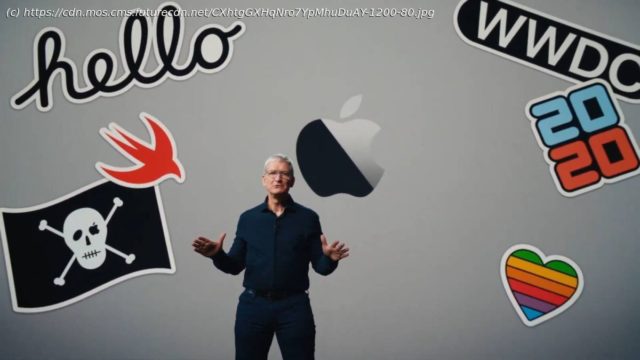Here’s everything we saw come out of WWDC 2020: iOS 14, iPadOS 14, macOS Big Sur…and new Apple chipsets.
Apple’s midyear WWDC event is largely dedicated to developers, but the opening showcase is all about what’s coming for consumers. And while this year’s WWDC 2020 keynote didn’t reveal any hardware per se, it had plenty of exciting software changes coming to Apple’s lineup of devices.
While no devices were shown off, the event had one giant announcement: going forward, the tech giant will be ditching Intel chipsets in its Mac lineup in favor of one designed by Apple itself. That’s right: just like the iPhone, iPad, and Apple Watch lines all use in-house chipsets, the Mac family will get proprietary silicon.
But there’s still plenty to get excited about with operating system updates. For instance, there are some meaty quality-of-life changes coming to iOS 14 that will auto-organize your app collection, enhance group chats, enhance Maps with greener navigation options, and make it far easier to download relevant apps while you’re out and about. And it’s finally catching up to Android by adding picture-in-picture video viewing.
iPadOS 14 will get some of those iOS perks itself along with more features that take advantage of tablet screens, like ‘sidebars’ filled with useful shortcuts and more robust menu choices. WatchOS 7 finally gets sleep tracking, as well as more workout modes and better customization of watch faces. Heck, it’ll even monitor how long you’re washing your hands.
MacOS 11 Big Sur, as it’s named, gets interface refinements and tweaks to Finder and the Toolbar, as well as a Control Center a la iOS and iPadOS for quick shortcuts to brightness and other features. For Apple TV, tvOS 14 is adding picture-in-picture and support for specialty Xbox controllers like the Xbox Elite 2 and Xbox Adaptive Controller.
That’s a lot of upgrades, both long-awaited and unanticipated-but-welcome. Here’s a breakdown for every corner of the Apple ecosystem that’s slated to get new tricks.
The big announcement of the day was saved for the Mac family, which is officially shifting away from Intel chips to use Apple-designed silicon in future Apple desktop machines. The first Mac to use an Apple chipset will be released before the end of 2020, while the transition for the full device lineup will take two years, Apple CEO Tim Cook said. The company is still pledging to support Intel-powered machines with new software upgrades for years.
Apple didn’t undersell the importance of the moment, and compared this transition to three prior Mac turning points in the device’s history: when it shifted to PowerPC chipsets, then when it introduced MacOS X, and finally when it adopted Intel chipsets.
Why change silicon? Apple credited its own chipsets as crucial to the success of its device line, starting with the A4 Bionic chipset in the iPhone 4 and onward with the Apple Watches and iPads released over the years. The new Mac chipsets will be a family of SoCs for the entire Mac line. Like its other system-on-chips, Apple is focusing on performance and power management with a neural engine for machine learning and scalable architecture.
iOS 14 has gotten the lion’s share of improvements at WWDC 2020. Most importantly, Apple has generously noticed how terrible we all are at organizing our pages and pages of apps – now, your final page on the Home Screen will be auto-generated app collections, and if you want, you can hide pages of apps you don’t really use. Yes, it feels a little Android-ish to us, too.
You can also insert mini-apps called Widgets into your Home Screen pages – think of them as the abbreviated apps you’d see on your Apple Watches, which you can customize in the Widget Gallery.






